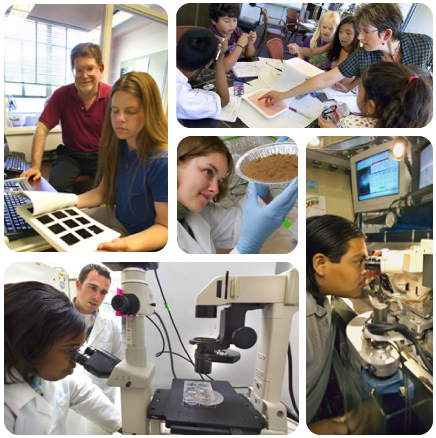Hispanics, Education and Labor Tendencies
 A few months ago the Department of Labor presented an interesting report about the employment market in the United States. This report provides very relevant information that predicts our immediate future
A few months ago the Department of Labor presented an interesting report about the employment market in the United States. This report provides very relevant information that predicts our immediate future
Some of this information points to the possibility of a much more diversified work force for 2014. In this projection for the near future, Hispanics are going to continue being the fastest growing social segment, eventually making up 33.7% of all American workers. This fact alone reflects the level of growth in the Hispanic population and its unstoppable influence in the United States.
This growth in the Hispanic population is produced at the same time as another important phenomenon: a higher demand for more specialized workers and professionalism from Hispanics. In the last few years, Hispanics applying for jobs have had improved academic preparation, and as a result have been able secure better employment. Education is propelling Hispanics’ fast integration into United States society as well as the current rapid socioeconomic growth among Hispanics. With these changes for the better, Hispanic influence also grows. Hispanics are on track, but we can’t congratulate ourselves yet: for many social sectors that education and quality employment opportunities are still out of reach. In a nation that prizes it’s history as a land of opportunity, these opportunities should be available to all Americans.
Federal and business programs encourage Hispanics to finish secondary school and pursue university studies through incentives like scholarships and financial aid, are vital to achieving increased integration for Hispanics. Only through education and improved employment can Hispanics make reality their “American” dreams and continue to grow and progress in this country.
Hispanic’s improved academic preparation has caused another important leap: political power and representation in the government or legislative and judicial powers for Hispanics. Increasingly more Hispanics are well prepared academically and professionally and secure relevant positions in federal, state, and local administrations.
Given that the population and the work force of a country are directly proportional, a brilliant future is predicted for Hispanics. Many current university students are the first generation from their families to attend University, and select degree programs depending on the current and predicted market for specific professions. Because of this practical concern with supply and demand, studies in business schools and nursing recruit Hispanic students in great numbers, because students know in these fields they will find work more easily and can make more money; money that their families need.
Currently, the careers in highest demand are health science, business, business administration, accounting, education and computer science.
The market’s demand for specialized workers influences tendencies in university studies pursued. Apart from concerns of market supply and demand of qualified workers, according to a research study realized by the University of Missouri-Rolla, around 50% of current university students are defined as part of the group of “return students”. They’re adults of 25 years of age or older that present certain advantages when compared to the “traditional” college student, such as established priorities, fixed goals, better time management and the ability to ask questions; characteristics all of them that make for students that are more mature and responsible, and have clearer ideas about what they want.
Many Hispanic students focus on areas like computer science, business school, health sciences, and the hospitality industry because of the demand for qualified workers in those industries, where students know they can easily find well-paid employment.
The work market and its needs influence tendencies in University studies in a very direct way. This is also apparent in the information collected by the Department of Labor, with their predictions for 2014:
Employees in business, and business administration and management, or those industries that have a direct relationship with them, will exceed 2.2 million, (14.4% growth).
Among the 20 most sought after degree programs in university bachelor’s or associate’s degrees will be: network and communication systems analysts; software engineers; medical assistants; dental hygienists; physiotherapists; networks and information systems administrators; and occupational therapists, among others.
For 2014, it’s predicted that higher education will matriculate a million eight hundred thousand more students than those currently enrolled, which indicates 27% growth when compared to the numbers for 2005.
Then, like today, students will have a priority: observing and analyzing labor tendencies in the market, the first step on the path to graduating with a university degree that will provide increased economic and social benefits in the future.

















